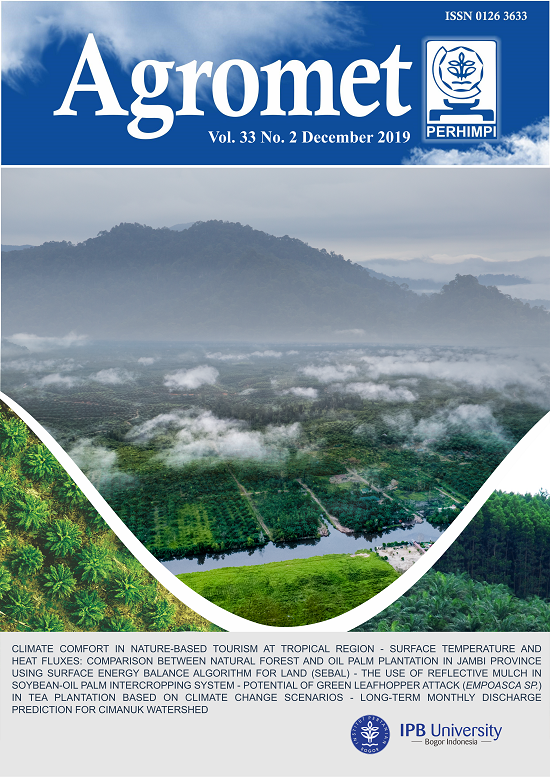Surface Temperature and Heat Fluxes: Comparison between Natural Forest and Oil Palm Plantation in Jambi Province Using Surface Energy Balance Algorithm for Land (SEBAL)
Abstract
One of the leading commodities that has contributed a lot of income for Indonesia is oil palm. Oil palm plantations in Jambi are widespread, affecting the energy balance and surface temperature. This study aims to compare surface temperature and heat fluxes of oil palm plantation with different ages, how is the difference between forest and oil palm plantation, and to analyze the effect of oil palm planting on micro-climate change in Jambi. Using the Surface Energy Balance Algorithm for Land (SEBAL), it was found that in Jambi, young oil palm (2 years old) had higher surface temperatures of 2oC compared with adult oil palm (19 years old). While the surface temperature of the adult oil palm plant is slightly higher than natural forest that is 0.5oC. The increase of the age of oil palm followed by the increase of plant height (h), Canopy Cover (CC), and surface roughness which resulted in the increase of NDVI value and the cooling effect around the plantation so that the surface temperature (Ts) decreased as indicated by equation TS = 27.00 - 0.1581h - 0.0317CC and NDVI = 0.1335 + 0.00892h + 0.00096CC. The sensible heat flux (H) is affected by surface temperature, roughness length, friction velocity, and aerodynamic resistance of the plant. The highest H value is in the oil palm plantation near Brimob which is 282 W/m2. Latent heat flux (LE) is the remainder of the net radiation minus the flux of the soil and the flux feels. The highest LE value is in the oil palm plantation of Pompa Air Village which is 710 W/m2. Substantially ground heat flux (G) is affected by net radiation, NDVI, surface temperature, and albedo. The highest value of G is in PT Pisifera Persada oil palm plantation of 98 W/m2.
Keywords: NDVI, net radiation, sensible heat flux, latent heat flux, Canopy Cover

